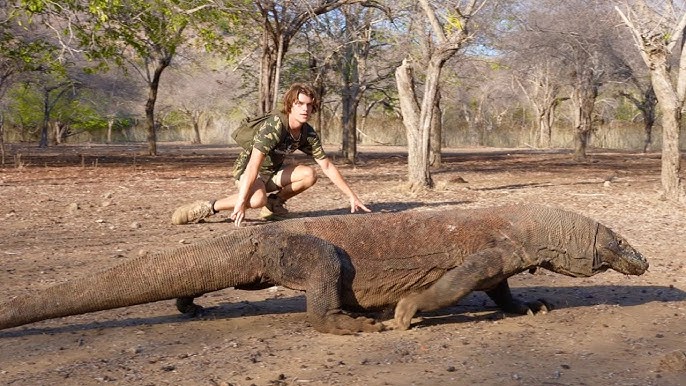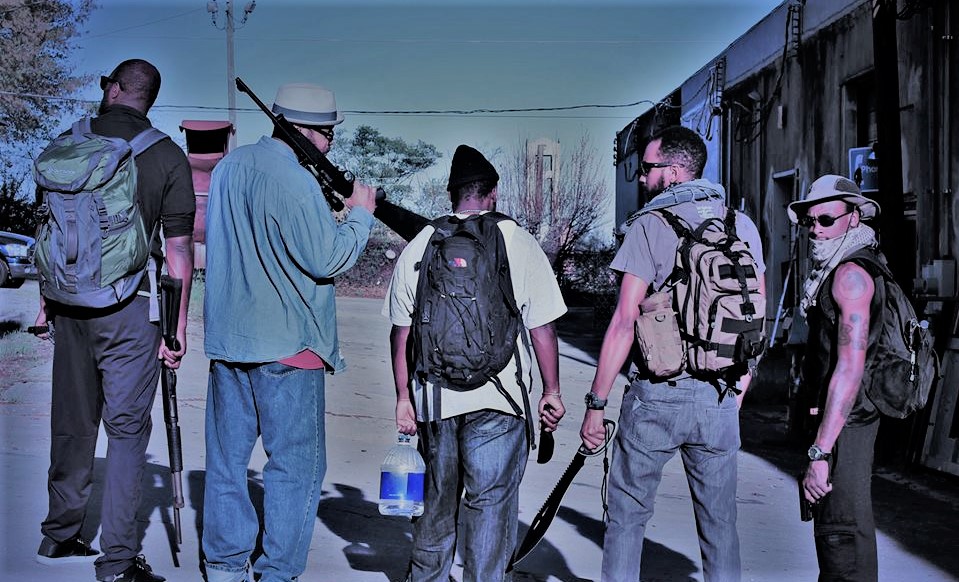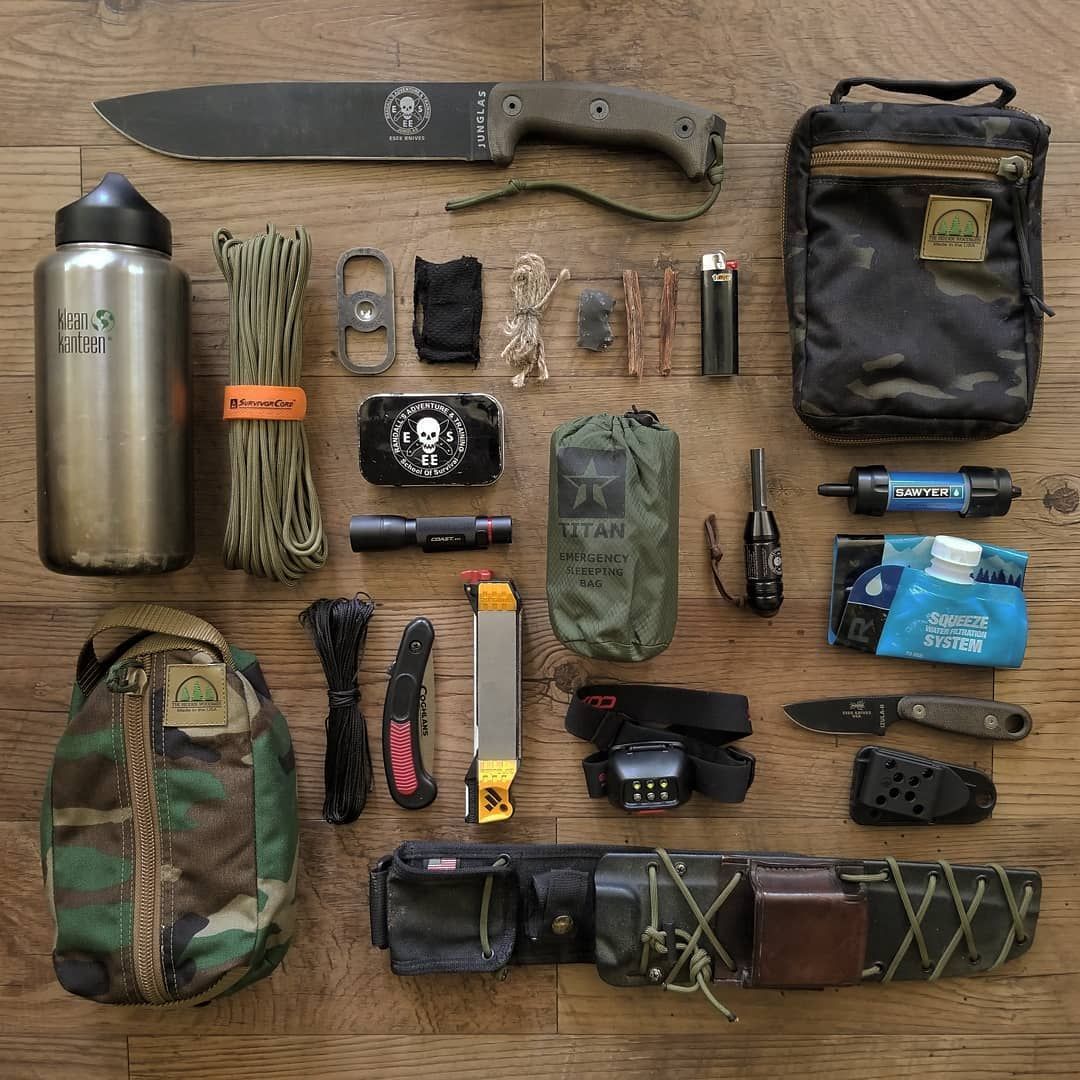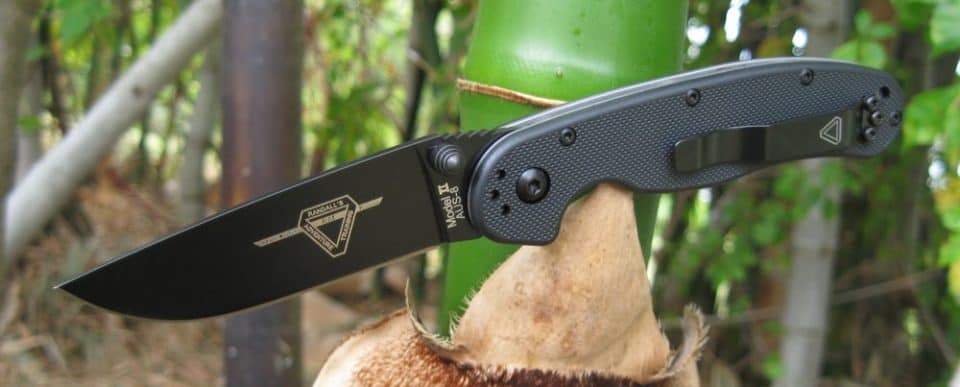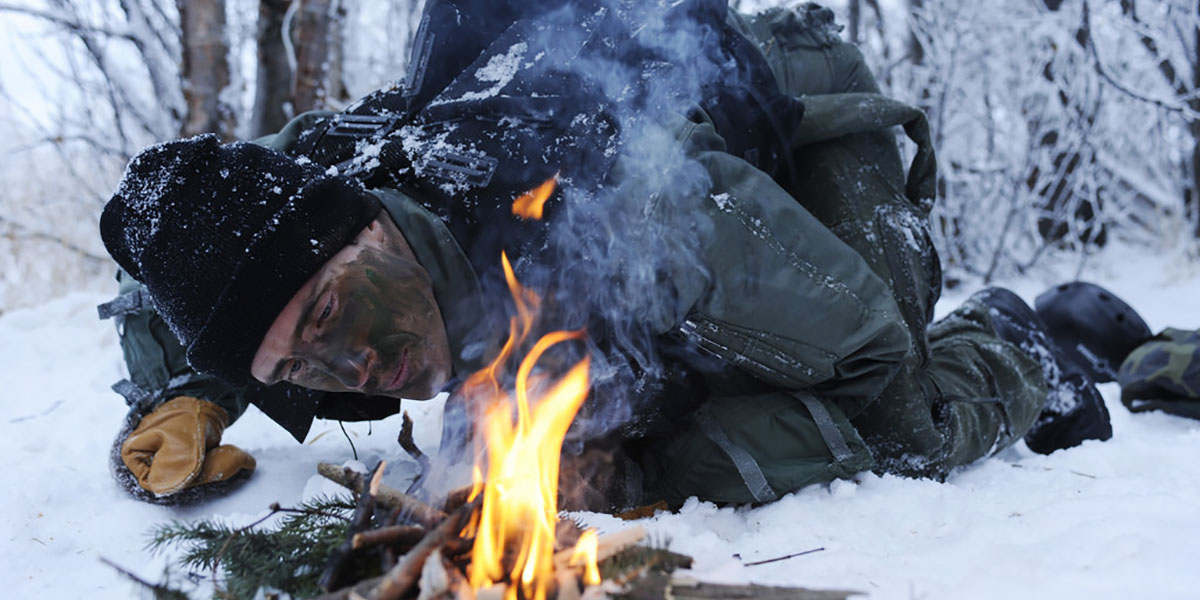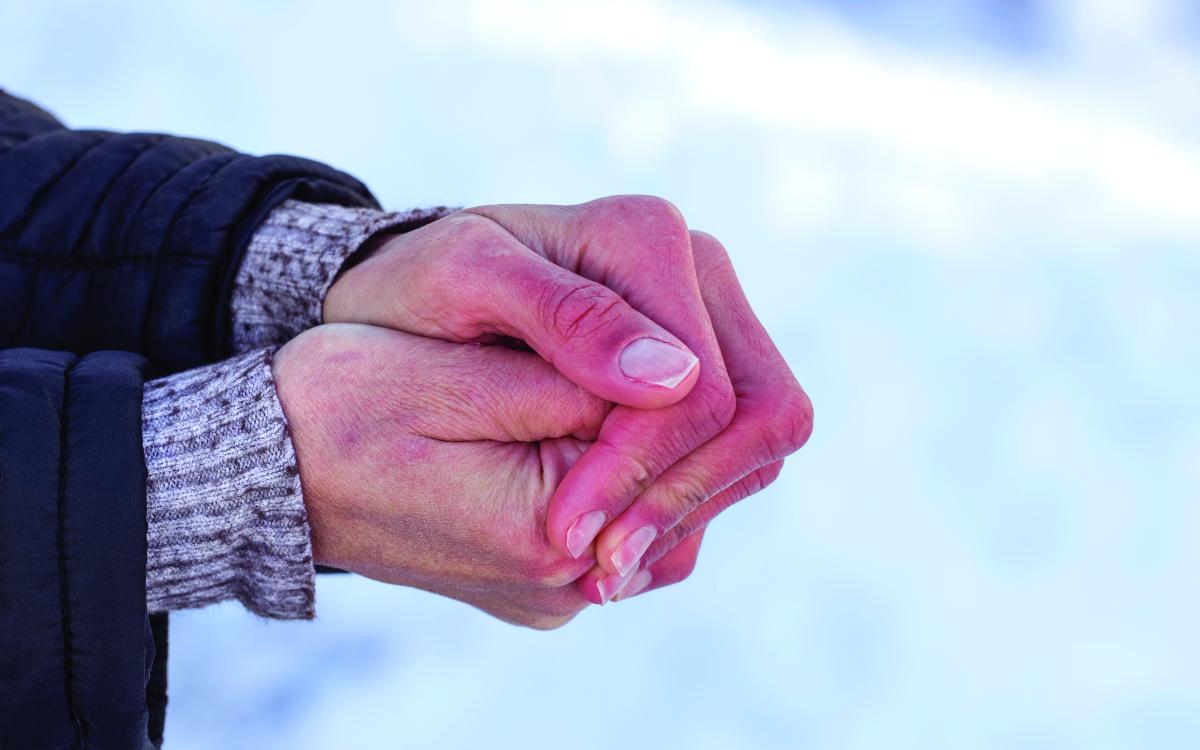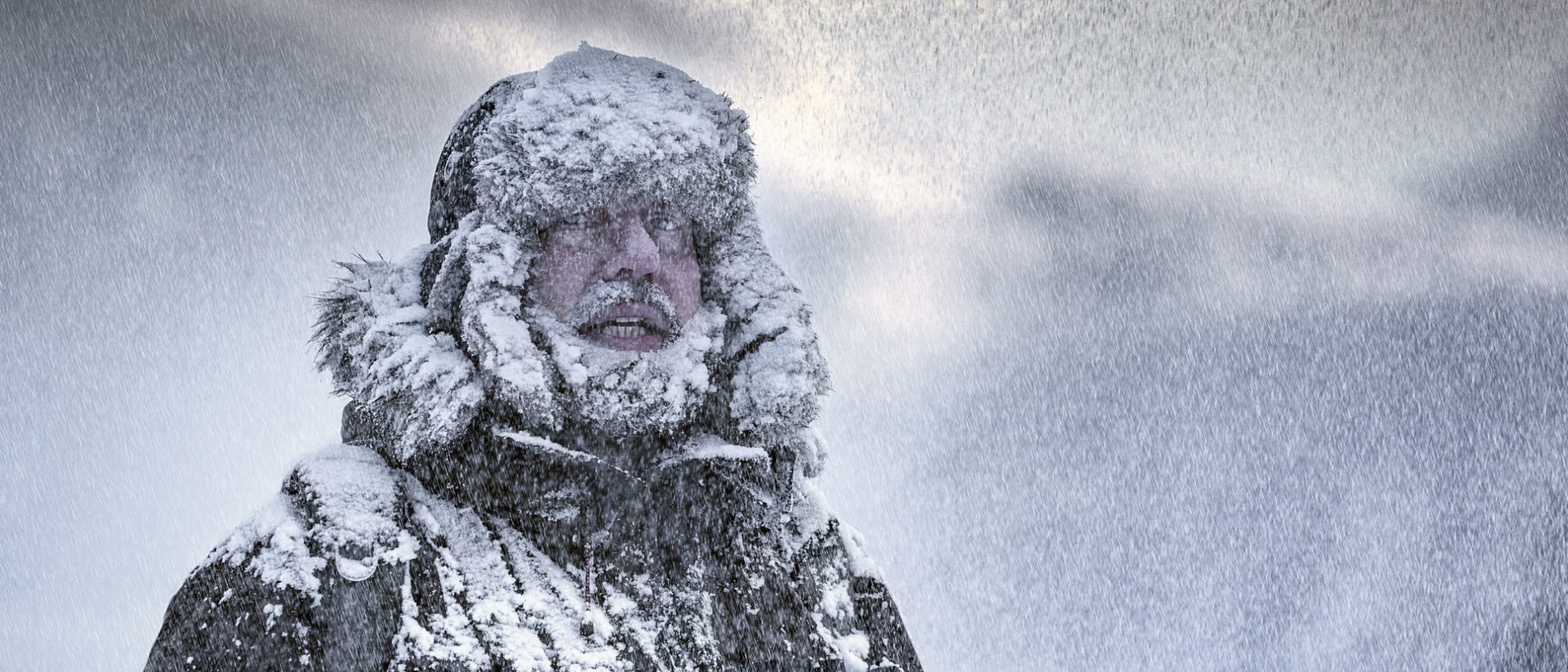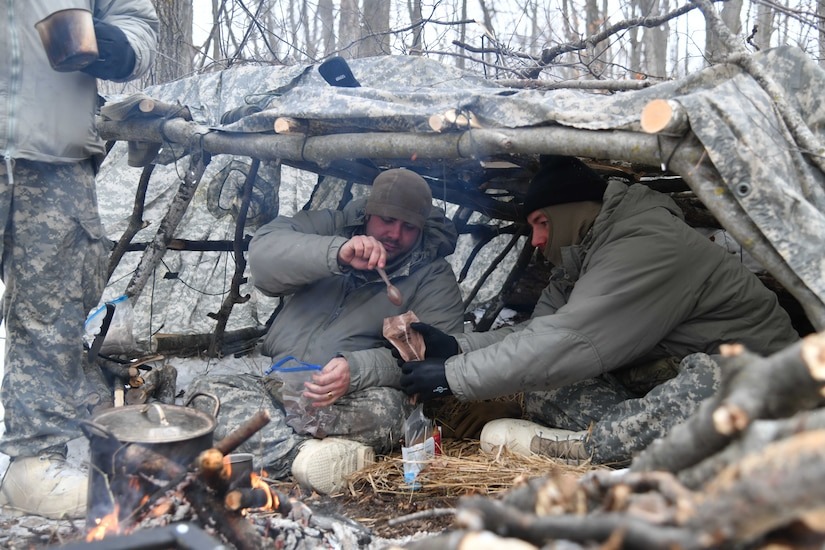In any emergency, providing first aid is already challenging. You are dealing with stress, limited tools, and often very little time. Add freezing temperatures, snow, and ice on top of that, and the job becomes dramatically tougher. The same wound that would be manageable on a warm summer day can turn life-threatening when biting wind, icy ground, and numb fingers get involved.
Cold conditions work against you in several ways at once. It is harder to move quickly, harder to keep your hands functional, and harder to access a warm, sheltered place where you can properly examine and treat injuries. Snow can bury useful plants or herbs, moisture destroys bandages and gear, and fire—your best ally for heat, sterilizing, and morale—is more difficult to start and maintain.
You also cannot ignore your own safety and comfort while helping someone else. In cold weather you must wear heavy layers, gloves, boots, hats, and other protective clothing. These keep you alive, but they also make it more awkward to handle small items, feel for pulses, tie bandages, or perform delicate tasks. Every button, buckle, or zipper becomes a tiny obstacle when someone is bleeding or losing consciousness in front of you.
Despite all of that, it is still possible to give effective first aid in winter conditions if you understand the specific threats that come with the cold and plan for them in advance. The goal is to treat the injury while preventing both you and your patient from succumbing to the environment at the same time.

In what follows, we will look at the key cold-weather dangers such as hypothermia, frostbite, and ice-related accidents, then move on to keeping supplies usable in low temperatures, working around bulky winter clothing, managing blood loss, fueling the body with enough calories, staying dry, building fire and shelter, avoiding detection when needed, and finally reviewing essential cold-weather survival skills that everyone should know before they ever set foot into freezing conditions.
Cold Weather First Aid and Survival
How to Reduce the Risk of Injury
The first thing to accept about cold-weather emergencies is that the odds of getting hurt are simply higher. Slippery surfaces, numb hands, poor visibility, and extreme fatigue all combine to raise the risk of falls, cuts, broken bones, frost damage, and exposure. You may also be out hunting, cutting wood, shoveling snow, or driving in dangerous conditions, which adds even more ways to get injured.
If you are the person expected to give first aid, your first duty is to avoid becoming a casualty yourself. In a blizzard, during an ice storm, or on a remote winter trail, a single mistake can turn one patient into two. That might mean slowing down a little, taking a safer route instead of a direct one, or refusing to perform a risky rescue if it clearly puts you in the same danger as the victim.
You will be dealing with a whole cluster of cold-related threats at the same time: frostbite gnawing away at exposed skin, hypothermia slowly pulling heat out of the body, disorientation caused by the cold and wind, and accidents such as hunting mishaps, vehicle wrecks, or falls through thin ice. All of these demand attention, but you must constantly balance your desire to help with the need to stay stable on your feet, keep your core warm, and maintain enough strength to continue working.
Hypothermia
Hypothermia is one of the most serious dangers in cold weather, and it is often the silent partner in many other injuries. You might be dealing with a cut, a broken bone, or a sprain, but if the person is lying on frozen ground or soaked in icy water, their body temperature can drop faster than you expect. In some cases, hypothermia is the main problem you are treating; in others, it creeps in behind the primary injury and complicates everything.
Treating hypothermia outdoors is difficult because what you really want—a warm, sheltered environment—may not exist nearby. You may be hours from a heated building or vehicle, and carrying an unconscious or severely injured person that far through snow might be impossible. That means you must improvise ways to trap warmth where you are.
In extreme cold, a conscious person can start to lose core temperature in minutes if the wind is strong or if they are wet. When someone is unconscious, their risk is even greater. They are no longer shivering effectively, they cannot move around to generate extra heat, and they cannot tell you how they feel. You become their only line of defense against the cold.
We naturally cool down while we sleep, even in comfortable conditions. In a freezing campsite or a broken-down car on the side of a winter road, that normal temperature drop can be the difference between safety and slipping into hypothermia. During deep sleep, the body’s automatic shivering response may ease off, which removes one of your main protection mechanisms.

The body’s survival instinct will also pull warm blood away from the arms, legs, fingers, and toes to protect the heart, lungs, and brain. That is good for staying alive, but it is terrible for the extremities. Fingers and toes become numb and pale, and they quickly become vulnerable to frostbite. Any major blood loss worsens this problem, because blood is your internal “hot liquid” that carries heat to tissues. Less circulating blood means less warmth reaching those outer areas.
With all this in mind, one of the simplest but most important principles in hypothermia care is to keep the person awake and as warm as possible. In a different situation, you might encourage a badly injured person to sleep and rest, but in severe cold, sleep can be dangerous unless they are properly insulated and monitored.
At the same time, you must watch your own temperature. Treating injuries sometimes forces you to remove your gloves or take off outer clothing for a few minutes. Whenever you do that, think in terms of a clock ticking. Expose your hands, treat the wound as efficiently as possible, and then cover back up again. If both you and your patient become hypothermic, your chances of surviving the night drop sharply.
Frostbite
Frostbite is the cold-weather injury that attacks the body’s outermost parts—fingers, toes, ears, nose, cheeks, sometimes even whole hands or feet. It is essentially the freezing of body tissue. Ice crystals form inside skin and deeper tissues, crushing cells and shutting down blood flow. In mild cases you may see white or gray patches and numbness; in severe cases, tissue dies and can later turn black, requiring amputation.
The risk of frostbite climbs whenever skin is wet and exposed, especially around areas where you must remove clothing to treat a wound. A gash in a leg or arm, for example, might force you to cut away pants or sleeves. The moment that damp fabric and bare skin are exposed to freezing air, the countdown begins. The colder and windier it is, the faster tissue will freeze.
This is why it is so important to keep the wound area as dry as possible. Once you have cleaned the injury, cover it with a dry dressing and try to shield it from snow, ice, and wind. Even small amounts of moisture—blood, melted snow, sweat—can accelerate heat loss. If you have spare clothing, dry bandages, or anything that can act as insulation, use it to create a barrier between the wound and the environment.
Frostbite does not just threaten a patient; it can also affect you while you are bending over them, kneeling in snow, or holding metal tools. Keep an eye on your own fingers, nose, and ears. Tingling, numbness, or a waxy look to the skin are warnings that you need to warm those areas immediately. You cannot dress someone else’s wounds if you can no longer feel your hands.
Ice and Treacherous Surfaces
Ice is one of the most dangerous companions of winter. It changes every step you take. Solid ground that would feel secure in summer becomes slick and unpredictable. A simple walk across a driveway or a frozen footpath can turn into a fall that breaks wrists, ribs, or hips. Concussions, back injuries, and deep bruises are all more common when ice is involved.
Traveling to reach a patient becomes slower and more complicated. Carrying someone across ice is extremely risky; a single slip can injure both of you, or worsen whatever damage they already have. Always remember the basic rule: you must protect yourself, even while you are trying to help someone else.
If someone breaks through the ice on a pond, river, or lake, the situation becomes critical. Rushing to them without thinking might simply add another person in the water. Instead, secure yourself first. Tie a rope around your waist and fix the other end to a solid tree, fence post, or heavy object that will not move. Whenever possible, lie down and spread your weight over the largest area you can as you move toward the hole—this lessens the pressure on any one spot on the ice.
At home or around a camp area, think ahead about walkways that you use repeatedly. Sprinkling rock salt or another de-icing material on those paths can reduce slips. It does not take much, but you must reapply it often because meltwater will refreeze when temperatures drop again.
Ice build-up on roofs, tarps, and shelters can be a double-edged sword. A thin layer of ice or snow can provide insulating value, trapping warmth and shielding against wind. But too much weight can collapse a weak structure. Watch for sagging beams or tearing fabric and remove accumulation before it becomes dangerous.
When Travel Becomes Difficult or Impossible
First aid is usually only the first step in caring for a seriously injured person. A bandage may temporarily slow bleeding, a splint may stabilize a fracture, and pain relief might calm someone down, but many injuries still require advanced treatment. A severed finger may need surgical reattachment. A deep gunshot wound may need exploration to remove fragments. Internal bleeding and major trauma cannot be fully managed in the field.
In theory, you stabilize the patient and then move them to a hospital or clinic. In reality, winter can shut that door. Heavy snow, impassable roads, stalled vehicles, and dangerous storms may make it nearly impossible to move someone without putting them—or you—into even more danger.
Tourniquets illustrate this problem. They can save lives by stopping deadly bleeding, but they cannot stay on indefinitely. Leave one in place too long, and the limb beyond the band tightens and may become unsalvageable. Ideally, a patient with a tourniquet is transported rapidly for surgery. In a blizzard, that may not be an option, so the decision to use one becomes much more complicated.
The best preparation is to think about movement long before you need it. Knowing how to make simple snowshoes from wood and cord can allow you to walk on top of deep snow instead of sinking into it. Keeping a sturdy sled or improvised stretcher nearby gives you a way to drag someone instead of carrying them. If you travel by vehicle, good winter maintenance—proper tires, antifreeze, fuel, and emergency supplies—can prevent breakdowns in the first place.
If someone is injured far from your cabin or camp, you may have to build a makeshift litter from poles, branches, and clothing to get them back. It is grueling work, especially in snow and cold, but having a mental plan and a few basic skills can make the difference between being trapped and slowly working your way toward shelter.
Keeping Medical Supplies and Equipment from Freezing
Cold does not just attack people; it also attacks your gear. Many first-aid supplies are liquids, gels, or creams. Balms, ointments, salves, herbal extracts, and medicated washes can all freeze solid in very low temperatures. Metal tools may stiffen because lubricants thicken or freeze, and even cloth bandages can become hard and unusable if they absorb moisture and then freeze.
Some products, like rubbing alcohol and high-proof tinctures, hold up well in the cold because alcohol remains liquid at lower temperatures. Hydrogen peroxide also tolerates extremely low temperatures before freezing. But many other liquids—saline bags, cough syrups, oral solutions—will freeze into blocks, making them difficult to use quickly.
Insulin deserves special mention. Most manufacturers warn clearly that insulin should not be frozen. Some types might retain partial effectiveness after freezing, while others break down and become unreliable. For someone with diabetes, incorrect dosing can be very dangerous. If insulin is part of your medical supplies, do everything in your power to keep it from freezing, and monitor blood sugar closely if you ever have to use vials that have been exposed to extreme cold.
Smaller tubes and containers have one advantage: they can be warmed with body heat. You can tuck them into an inside pocket, place them under your armpit, or hold them in your hands for several minutes until the contents soften enough to squeeze out. For larger items, chemical heat packs, hand warmers, or rations heaters from military-style meals can provide extra warmth.
Vehicle engines and mechanical equipment also require cold-weather adjustments. Using an appropriate low-viscosity oil helps motors turn over in freezing weather. The right mix of antifreeze in radiators prevents cracked blocks and broken hoses. Preparing these details ahead of time means that, when someone needs urgent transport, your vehicle is more likely to start and keep running.
Working Around Layers of Clothing
In bitter weather, everyone bundles up. That is good for survival but awkward for treatment. Thick coats, outer shells, multiple shirts, long underwear, snow pants, insulated gloves, and heavy boots create a protective armor that hides injuries and blocks your hands.
If you keep your gloves on, it may be hard to feel pulses, locate small wounds, or perform delicate tasks like removing splinters or working with small bandages. If you take your gloves off, your own fingers begin to lose dexterity and sensation in minutes. The cold can turn careful work into clumsy fumbling.
One smart compromise is to carry thin rubber or nitrile gloves as part of your kit. You can pull off your bulky winter gloves and slip on a lighter, waterproof layer. That keeps your skin from getting wet with blood or meltwater and traps at least a bit of warmth, while still allowing much better control than thick mittens.
For the patient, removing clothing to access a wound is always a risk. The more layers you strip away, the faster they lose heat. Work efficiently: expose only the area you must see, cover everything else back up as you go, and replace wet items with dry ones whenever possible. Heat packs, especially those designed for hands or feet, can help you warm the person again by placing them in high-blood-flow areas like armpits or groin, over a layer of fabric to avoid burns.
Remember that clothing soaked with sweat, snow, or rain becomes an enemy very quickly. A thick down jacket that once protected someone can start pulling heat away from them if it is saturated. Whenever you can, store a change of clothes—socks, base layers, gloves—in waterproof bags so you can swap out wet fabric for dry in an emergency.
How to Stop Bleeding and Handle Wound Care
When temperatures drop below freezing, your body changes the way it manages blood flow. In some areas—especially near vital organs—circulation increases to protect your core. In the limbs, fingers, and toes, circulation may slow dramatically to preserve heat for the heart and brain. These shifts affect how wounds bleed and how easy or difficult they are to treat.
A deep wound on the torso may bleed more heavily because blood flow is still strong. A similar cut on a hand or foot may bleed less because the body has already reduced circulation to that area. Either way, your job is to control the bleeding without cutting off what little warmth is still reaching the extremities.
In most injuries, steady, firm pressure for several minutes is the simplest and most effective way to stop bleeding. Even significant bleeding often slows if you press directly on the wound with a clean cloth, bandage, or piece of clothing. In fact, most cases can be controlled by holding pressure for three to five minutes without lifting your hand to “check” too early. Every time you lift pressure prematurely, you undo the progress and may force yourself to start over.
But heavy bleeding needs special attention. If the blood is bright red and spurting or pulsing, it suggests arterial bleeding—this is extremely serious and may not stop easily with pressure alone. Darker, steady-flowing blood usually means venous bleeding, which can still be dangerous but may be more manageable in the field. Recognizing this can guide how aggressively you must act.
Cold weather complicates everything. Bandages can freeze stiff. Fingers go numb and lose grip. And if the person is lying in snow or ice, their core temperature may be dropping even as you are trying to stop the blood loss. You must work efficiently and keep the wound, your hands, and the surrounding clothing as dry as possible. Water or melted snow on fabric quickly becomes ice, turning bandages brittle and reducing their ability to hold pressure.
If blood loss is severe enough that direct pressure is not working, a tourniquet may be required. But this must be done with caution. A tourniquet can save a life but also risks serious tissue damage if left on too long. In a normal situation, you would apply one and then rush the patient to a hospital. In a snowstorm or wilderness emergency, rapid transport may not be possible. You must weigh the danger of uncontrolled bleeding against the long-term risk to the limb.
If you can stop the bleeding with pressure and dressings, that is always the preferred route. Wrap the wound loosely enough to allow some circulation, but tightly enough to keep the dressing in place. And always check that the injured area remains warm and receives at least some blood flow—cold, pale, numb tissue may be a sign that the bandage is too tight or that the cold is taking over.
When treating wounds in freezing conditions, the most important thing—aside from stopping the bleeding—is to protect the person from slipping further toward hypothermia. A bloody shirt or wet jacket will accelerate heat loss dramatically. Replace wet garments with dry ones whenever possible, and place a layer between the person and the cold ground to slow the transfer of heat.
Caloric Intake in Extreme Cold
Your body becomes a furnace in cold conditions, burning through calories at an astonishing rate simply to stay alive. Even resting in freezing temperatures drains energy because the body must constantly generate heat. Add to that the physical effort of walking through snow, carrying gear, treating injuries, or building shelter, and your energy demands multiply.
People often underestimate how much fuel they need. A healthy adult who might normally require around 2,000 calories a day can burn twice that amount in harsh winter weather. Some explorers, soldiers, and mountain workers consume 5,000 calories a day or more just to maintain strength.
When someone is injured, their body needs even more energy to heal. But cold conditions can mask early signs of low blood sugar or dehydration. A person may seem light-headed, confused, or shaky, and you might assume they are sliding into hypothermia when the real issue is simply that they have no calories left to burn. This is especially true for diabetics, who face a double threat: cold weather affects blood sugar levels, and limited food intake can worsen instability.
Water needs also increase in winter. People wrongly assume they do not need to drink as much when they are cold because they do not feel sweaty or thirsty. In reality, you lose moisture through breath, exertion, and the dry winter air. Dehydration creeps in quietly and can mimic hypothermia or fatigue. Melted snow or ice can provide hydration, but it must be warmed before drinking whenever possible to avoid lowering body temperature further.
A practical rule is to plan for at least 1.5 times your usual water intake and nearly double your calories if you expect to spend extended time in freezing weather. Fatty, calorie-dense foods—nuts, chocolate, cheese, peanut butter, dried meat—are ideal because they compact a lot of energy into small portions and digest slowly, providing steady warmth.
When treating others, watch for signs of low energy: sluggish behavior, trouble thinking, slow responses, or a sudden wave of exhaustion. Encouraging small, frequent snacks can help keep them stable, especially if they are shivering or have spent time exposed to the wind and cold.
How to Stay Dry
If you talk to anyone experienced in winter survival, they will tell you the same thing: staying dry is almost as important as staying warm. Wet fabric, whether from falling into water, melting snow, sweating, or sitting on damp ground, becomes a thief of body heat. It pulls warmth away from the skin at an alarming rate. In freezing weather, wet clothing is often the fastest path to hypothermia.
If someone has gotten soaked, treat this as a priority. Once life-threatening bleeding or major trauma is addressed, your next mission is to get them dry. Remove wet clothing immediately and replace it with dry garments if you have them. Even a single dry shirt or pair of socks can make a dramatic difference.
Carrying extra clothing in waterproof bags is a smart habit. A dry pair of socks can save toes from frostbite. A dry base layer can protect someone’s core during the critical early minutes after exposure. Even wrapping someone in spare blankets, tarps, or jackets can help stabilize their condition while you decide what to do next.
One easily overlooked danger is sweat. When you are hiking, chopping wood, or carrying someone through deep snow, you work up heat fast. If your inner layers become damp with sweat, they begin cooling the moment you stop moving. This is why experienced winter travelers dress in layers that wick moisture away from the skin. Wool is excellent for this, as are many modern synthetic materials. Cotton, on the other hand, holds moisture and becomes dangerously cold once it gets wet.
If you find yourself wet, take action immediately. Even if the situation feels chaotic, set aside a few minutes to dry off and change layers before cold exposure forces your body into a downward spiral. This may be the difference between staying functional and becoming another patient who needs rescue.
Building a Fire
Fire is one of your best allies in freezing weather, but building one in snow or ice is far from easy. Damp wood refuses to ignite, snow collapses into your fire pit, and frozen fingers struggle to strike a spark. Still, a fire remains essential—for heat, cooking, drying clothes, boiling water, sterilizing tools, and raising morale.
Start by clearing a patch of ground all the way down to dirt if possible. If snow is deep, pack it down firmly or build a platform of logs to keep your fire elevated. Fire that sits directly on snow will melt downward and extinguish itself quickly.
Dry tinder is crucial. Birch bark, resin-rich wood shavings, bundled grass, or cotton fibers can help you get the flame going, but in winter these may be harder to find. Carrying a fire-starting kit—waterproof matches, ferro rods, wax-coated tinder, magnesium sticks—can save enormous time and energy.
Once you have tinder burning, add small twigs, then thicker sticks, and finally larger logs. Building the structure in a teepee shape often works well in winter because it lets heat rise and dry out the upper wood. Windbreaks of snow, branches, or rocks can help protect the flame, but always maintain enough ventilation so the fire can breathe.
Having a fire starter ready before you need it is a lifesaver. Cold straps your fingers of dexterity, and soaking snow makes every step harder. A lighter stashed inside your inner pocket or chemical fire tabs kept dry in a sealed container can turn a desperate situation into a manageable one.
Finding or Building Shelter
In warm seasons, you might get away with sleeping under the stars or quickly throwing together a simple lean-to. But in freezing environments, shelter becomes non-negotiable. It protects you from the wind, traps your body heat, and gives you a place to treat injuries without fighting the elements every second.
A proper winter shelter must block wind, hold warmth, and keep you off the frozen ground. Even the best sleeping bag loses effectiveness if it rests directly on snow, because cold travels upward rapidly. You will need an insulating layer beneath you—tree boughs, thick clothing, tarps, folded blankets, or even piled vegetation.
If you know basic bushcraft, you might build a traditional snow shelter such as a snow cave, a trench shelter, or a compacted snow mound. These take time and effort but can be remarkably warm once completed. Ice and snow act as insulation by trapping still air inside their structure, reducing heat loss.
If natural shelter is not available, carry simple items such as plastic tarps, emergency blankets, or heavy-duty trash bags. These weigh little but can block wind and trap enough heat to keep you alive. Even a tarp wrapped tightly around a fallen tree trunk can serve as a temporary refuge.
The important thing is to create some kind of barrier between your body and the cold world around you. Freezing temperatures do not give you second chances—your shelter must be ready long before you reach the point of exhaustion.
How to Avoid Detection
In some survival scenarios, protecting yourself may mean avoiding being seen. Whether the danger is from wild animals, hostile people, or unknown threats, you may need to minimize light, noise, and smoke.
Fire, as valuable as it is, can also reveal your position. Smoke rising during the day is visible from far distances, especially against white snow. At night, firelight can catch the eyes of anyone looking in your direction. This is why you must learn how to use the terrain to hide your heat source. Depressions in the ground, rock overhangs, dense clusters of trees, or natural bowls in the landscape can shield your fire from view.
Some people rely on caves, although they are not available everywhere and can have their own dangers. If you do use a cave, be cautious about ventilation—smoke buildup can be deadly.
If you must avoid detection entirely, shared body heat, heavy insulation, and proper shelter are sometimes your only options, since you may have to forgo fire. This requires careful planning: extra clothing, adequate calories, and a well-insulated sleeping system.
Knowing your surroundings is key. Understanding which areas provide natural concealment and which expose you to visibility can guide you in placing your shelter and choosing your routes.
8 Cold-Weather Survival Skills Everyone Should Know
-
How to dress properly. Layering is essential for maintaining warmth without overheating. Choose natural fibers for inner layers, add insulating materials in the middle, and finish with a waterproof shell. Hats and dry socks are not optional—they are critical.
-
How to build a fire in winter. A reliable winter fire can keep you alive. Learn how to gather dry tinder, create a windbreak, and ignite a flame even when everything around you is cold and damp.
-
How to keep warm. Avoid sweating, conserve your strength, and stay sheltered from the wind. When possible, stay with others—shared body heat is powerful. Light movement helps circulation but do not exhaust yourself unnecessarily.
-
How to signal distress. If rescue is a possibility, remain in one location. Three distinct signals—three blasts on a whistle, three fires, three piles of rocks—form a universal distress pattern.
-
How to find water. Clean snow can be melted for hydration. Flowing water is preferred when available. Boil whenever possible, and avoid eating snow directly because it lowers core temperature.
-
How to find or build shelter. Whether using a natural shelter like a cave or building one from snow or brush, the goal is always to stay protected from wind and stay insulated from the cold ground.
-
How to eat for survival. Correct identification of wild foods in winter is difficult, so your best defense is packing calorie-dense, high-fat snacks. They fuel your furnace and help keep you warm from the inside out.
-
How to focus and keep your mind steady. Panic clouds judgment. Loneliness and boredom can be dangerous. Practicing simple mindfulness techniques can keep your thoughts clear and help you make better decisions when it matters most.

